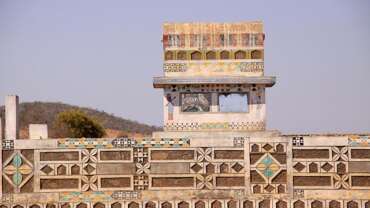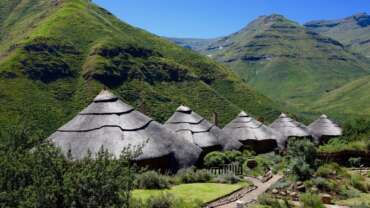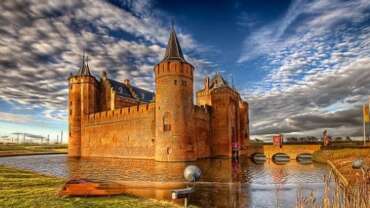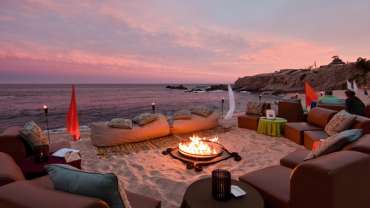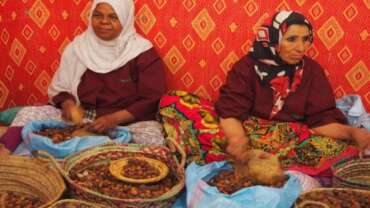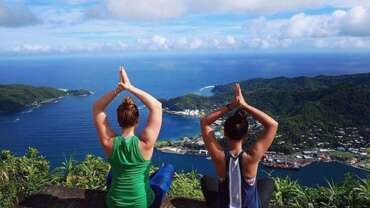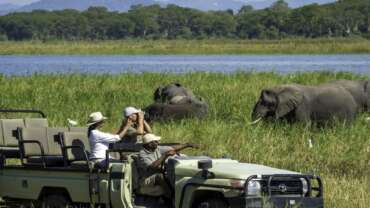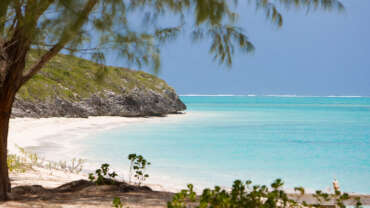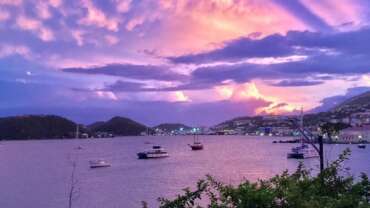Welcome to Ivory Coast!
Côte d’Ivoire is a West African country with beach resorts, rainforests and a French-colonial legacy. Abidjan, on the Atlantic coast, is the country’s major urban center. Its modern landmarks include zigguratlike, concrete La Pyramide and St. Paul’s Cathedral, a swooping structure tethered to a massive cross. North of the central business district, Banco National Park is a rainforest preserve with hiking trails.
History of Cote D’Ivoire
Early history
Abundant archaeological evidence confirms the presence of early humans in what is now Côte d’Ivoire. Groups in the north were drawn into the trans-Saharan trade networks of the Ghana and Mali empires. Islam arrived with Malinke merchants as trade expanded. Mali’s collapse in the 16th century resulted in a great upheaval that sent waves of migrants southward, where they founded new kingdoms in the hinterlands of the forest zone. The original inhabitants were either displaced or assimilated by these new groups.
Precolonial kingdoms
Important kingdoms flourished in the precolonial period. In the savanna country, towns developed around communities of Dyula traders. Kong existed for several centuries before Sekou Ouattara and his sons established a new dynasty there in the early 18th century. Kong lasted until 1897, when it was destroyed by Samory Touré, who was in the process of creating a new Muslim empire that included what is now northern Côte d’Ivoire. The Bouna kingdom was created in the late 17th century by Bounkani, an immigrant from Dagomba (now Ghana). It, along with Kong, became a major centre of Islamic learning.
The wars associated with the rise of the Asante empire in the late 17th century led to the migration of numerous Akan peoples into the forest region of Côte d’Ivoire. The most powerful of the states established was the Abron kingdom of Gyaman founded by Tan Daté. It was conquered by the Asante in the 1730s, and, despite numerous revolts, remained subject to it until 1875. In much the same circumstances the Anyi kingdoms of Indénié (Ndenye) and Sanwi were founded. Following the death in 1750 of the ruler of the Asante, Asantehene Opoku Ware, a succession struggle in Kumasi (the capital of the Asante empire) forced one contender, Queen Abla Poku (Awura Poku), and her supporters to enter the north-central part of Côte d’Ivoire. They founded the Baule kingdom, remarkable for its blending of Akan and local traditions.
Arrival of Europeans
Until the 19th century, European contact was confined to the coast, where French and Portuguese traders sought slaves and ivory. Louis-Édouard Bouet-Willaumez began signing treaties with coastal chiefs in the 1830s that allowed France to build forts and trading posts. France withdrew in 1870, but private merchants remained. Arthur Verdier sent explorers north and imported the first coffee plants. By the 1890s, inland penetration by traders such as Marcel Triech-Laplène and military missions such as those of Capt. Louis-Gustave Binger in 1887–89 resulted in more treaties and French “protectorate” relationships with many groups.
As the European rush to divide Africa accelerated, France claimed Côte d’Ivoire as a colony in 1893. Borders were determined in 1898, following the capture of Samory Touré. Gov. Gabriel Angoulvant began the military occupation in 1908. Imposition of forced labour and head taxes led to fierce resistance, especially among the Baule, Anyi, and Abe (Abbey). New revolts broke out when France conscripted thousands of Ivoirians to serve with other western African soldiers in World War I. France’s superior weaponry eventually triumphed, although the colony was not considered under control until 1918.
March toward independence
Following World War I, concerted efforts toward economic development were taken. The railway was extended to Bobo Dioulasso, which, along with most of Upper Volta (now Burkina Faso), was attached to Côte d’Ivoire in 1933. Schools and Western-style health facilities were introduced, exploitation of the forests was intensified, and Africans were encouraged to plant cash crops for export. By 1939, Africans grew 90 percent of the cocoa and 80 percent of the coffee produced in the colony.
Forty thousand Ivoirians fought for the French army during World War II. Between 1940 and 1942 the colony, along with the rest of French West Africa, chose to remain under the Vichy government. Racist legislation, economic discrimination against African planters, increased forced labour, and a depression caused by Britain’s naval blockade created enormous discontent. Educated Africans thus welcomed the subsequent Free French regime. In 1944 Félix Houphouët-Boigny and Auguste Denise formed the African Farmers Union (SAA), which, with the support of the colony’s governor, André Latrille, secured equal treatment for African planters. Houphouët-Boigny’s all-African slate swept local elections in 1945. The following year, with Côte d’Ivoire part of the French Union, he was elected to the French Assembly, where he spearheaded the law to abolish forced labour throughout the empire. The present borders were set in 1947, when the north reverted to the country of Upper Volta.
Côte d’Ivoire since independence
Houphouët-Boigny’s rule
In 1946 Houphouët-Boigny helped found the African Democratic Rally (RDA), a western Africa–based umbrella organization that sought equality for Africans; the Ivoirian branch was the Democratic Party of Côte d’Ivoire (PDCI). Though at first harshly repressed, the RDA achieved many of its goals. In 1960 Houphouët-Boigny, who had been a cabinet minister in two French governments, was elected president of the newly independent Côte d’Ivoire. He ruled until his death, in 1993 during his seventh term in office. Despite reported coup attempts in 1963 and 1973, Houphouët-Boigny had a remarkable ability to reconcile opponents, which sustained the country’s peaceful and prosperous relations with France and with its neighbours throughout most of his rule. However, political unrest and strained foreign relations were increasingly evident from the late 1980s. Côte d’Ivoire’s first multiparty elections were held in 1990, and Houphouët-Boigny managed to defeat challenger Laurent Gbagbo of the Ivoirian Popular Front (FPI) in a presidential election that was unsuccessfully appealed to the Supreme Court. Upon his death in 1993, Houphouët-Boigny was succeeded by the president of the National Assembly, Henri Konan Bédié, who was, like his predecessor, a member of the Baule ethnic group and the PDCI.
People of Cote D’Ivoire
Ethnic groups
There are more than 60 ethnic groups in Côte d’Ivoire. Traditionally, the groups were independent from each other, but, over time, internal migration and extensive intermarriage greatly reduced group identity with a particular cultural tradition in any given locality. Each of these groups has ethnic affiliations with larger groups living outside the borders of the country. Thus, the Baule, as well as other peoples living east of the Bandama River, are affiliated with the Akan in Ghana, as are the lagoon fishermen farther south. The forest people west of the Bandama are connected to the Kru peoples of Liberia. In the interior the Kru group is subdivided into small groupings scattered over large areas of the forest.
The savanna peoples may be divided into two main groups. The Mande group, which is particularly strong in Mali, is represented by the Malinke farmers and by the Dyula traders. The Gur group, represented by the Senufo, Lobi, and Bobo, are widely scattered over the northeastern region and also live in neighbouring states.
Languages
All African languages represented in Côte d’Ivoire belong to one of three subgroups of the Niger-Congo family: Kwa in the south, Mande in the northwest, and Gur in the northeast. A trade language, known as Dyula-Taboussi and akin to the Mande Bambara, is spoken throughout the country by Muslim traders, and français de Moussa is a pidgin French widely spoken in Abidjan. The official language is French.
Religion
Islam is followed by about two-fifths of the population, found primarily in the northwest and in Abidjan. About two-fifths of the population is Christian, mostly Roman Catholic or Evangelical. Also present in the country are followers of the Harrist faith, a syncretic religion indigenous to Côte d’Ivoire. Founded by William Wade Harris during World War I, it claims an estimated 100,000 adherents in the country.
Art & Culture of Cote D’Ivoire
The arts
Ivoirian literature in French was born in colonial times at the Ponty High School in Dakar, Senegal. One of its graduates, Bernard B. Dadié, became world-famous for autobiographical reminiscences in novel form. His schoolmates Coffi Gadeau and Amon d’Aby won a large local audience and many followers through their plays for the national theatre. A younger playwright, Zadi Zaourou, launched a chair in African literature at an Ivoirian university, and Ahmadou Kourouma, a Muslim, inaugurated a new era of the Ivoirian novel with Les Soleils des indépendances (1968; “The Suns of Independence”), first published in Canada. Ake Loba is another well-known writer from the country.
Music is a vital part of Ivoirian culture. There is a strong tradition of griots who use music to help tell historical stories. The Senufo use marimbas and tuned iron gongs, among other instruments, to make their music. Music that combines both African and European traditions also exists. Alpha Blondy, who is strongly influenced by reggae, is Côte d’Ivoire’s most internationally known musician.
Cultural Life
Cultural milieu
The cultural milieu has remained split, rather more completely than in other African countries, between a maze of ethnic-based cultures and a foreign intrusion that is almost exclusively French. Traditional arts flourish. The Senufo carve masks, decorate doors with esoteric symbols, and dance to the slow, majestic rhythms of drums supported by xylophones. The mountaineers of the Man forest wear masks showing horrifying faces, and they dance to a pace governed by the sound of drums and led by stilt-walkers. Versatile Baule artists make fine gold jewelry and wooden sculptures.
Songon Park!
Located not far from the Jacqueville bridge, in the commune of Songon about 34 km from Abidjan, SONGON PARK is a hotel complex bordering the lagoon that offers an exceptional setting for your seminars and business trips. Songon Park is also ideal for nature lovers, seaside and nautical activities.




